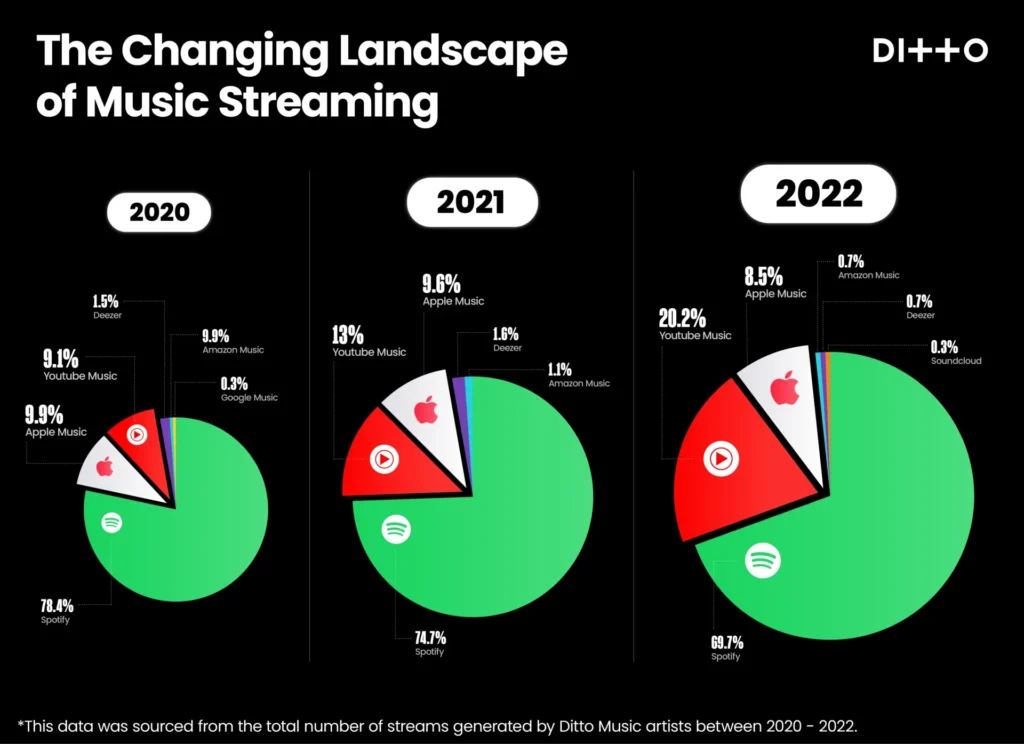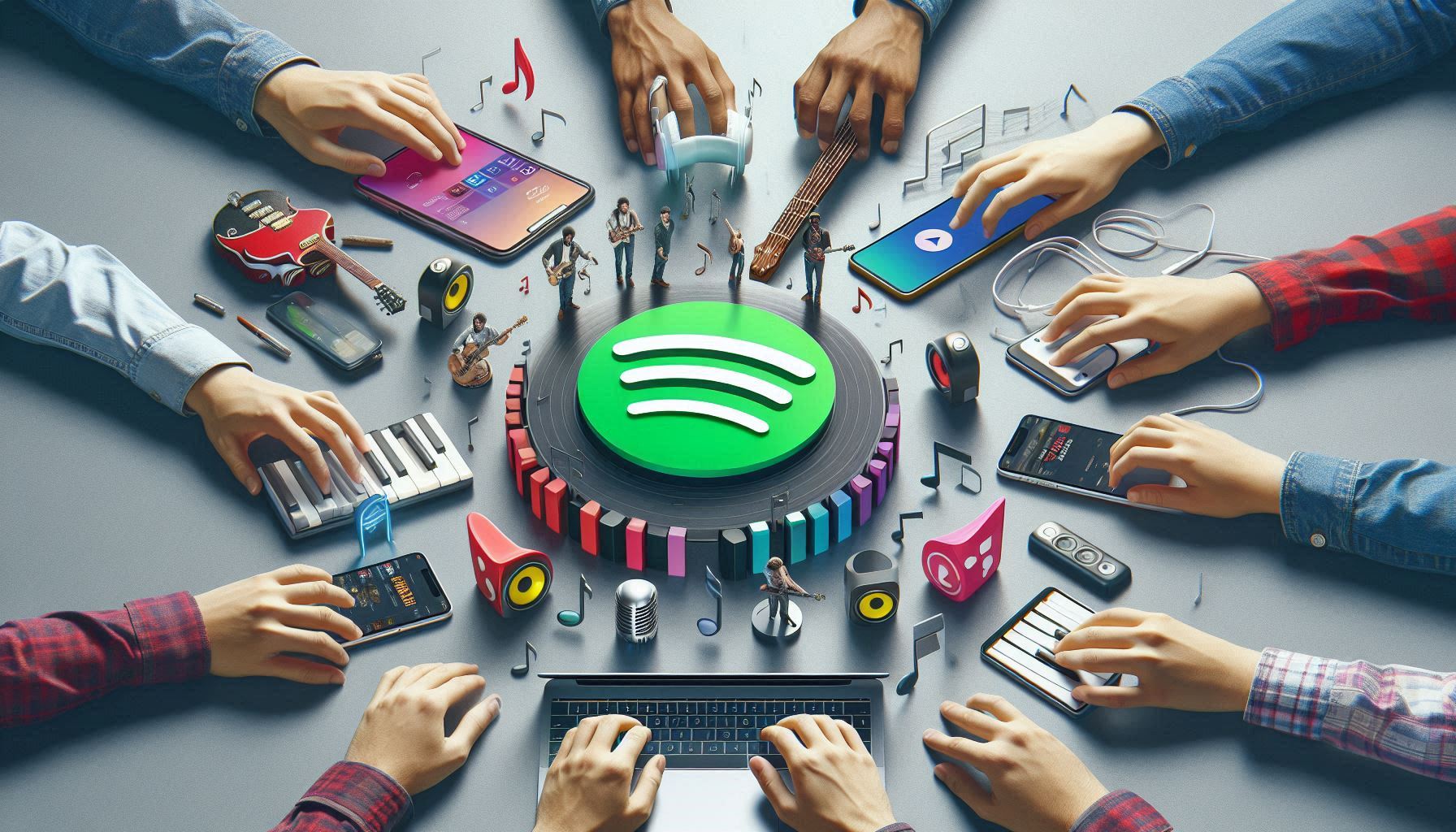
The music industry has undergone a significant transformation in the past two decades, with the rise of streaming platforms like Spotify, Apple Music, and YouTube Music reshaping the way music is created, distributed, and consumed. These platforms have revolutionized access to music, giving listeners instant access to millions of songs at their fingertips. But what impact have they had on artists, record labels, and the industry as a whole?
In this article, we will explore the positive and negative effects of streaming platforms on the music industry, from democratizing access to music to changing revenue models and listener habits.
Democratizing Access to Music
One of the most significant impacts of streaming platforms has been the democratization of music access. In the past, purchasing physical copies of albums or singles was the primary way to listen to music, limiting access based on geographic location, price, and availability. Streaming services have eliminated these barriers, allowing users to access vast music libraries at a relatively low cost.
Benefits:
- Global access: Fans from all over the world can listen to music from different cultures, genres, and languages without restrictions.
- Discoverability: Platforms like Spotify use algorithms and playlists like “Discover Weekly” to introduce listeners to new artists and songs they may not have otherwise found.
- Convenience: Instead of buying individual albums or songs, users can stream an unlimited number of tracks for a monthly fee, providing greater value.
This has leveled the playing field for independent and lesser-known artists, giving them the opportunity to reach global audiences without needing the backing of major record labels.
Changing Revenue Models for Artists
While streaming has made music more accessible to fans, it has also introduced significant changes to the way artists earn money from their music. Traditionally, musicians relied on album sales, concert tickets, and merchandise as their primary sources of income. Streaming platforms, however, have altered this model by shifting revenue to per-stream payments.
Challenges for Artists:
- Low per-stream payouts: The average payout per stream on platforms like Spotify is often less than a cent. This means that artists need millions of streams to earn substantial revenue.
- Dependence on streaming numbers: With album sales declining, many artists rely heavily on streaming income, which is often unpredictable and controlled by algorithms.
- Increased competition: Since streaming platforms offer an enormous library of music, artists face stiffer competition to stand out in a saturated market.
Many musicians, especially independent artists, have expressed frustration with the small payouts from streaming services. However, some argue that these platforms provide more visibility and opportunities for exposure than ever before.
The Role of Playlists and Algorithms
Streaming platforms are not just passive music libraries; they actively shape the listening experience through curated playlists and algorithms. Personalized playlists like Spotify’s “Discover Weekly” or Apple Music’s “For You” use data-driven algorithms to recommend songs based on a user’s listening habits. This has become a crucial tool for artists to gain exposure and grow their fanbase.
Benefits:
- Increased exposure: Getting featured on a popular playlist can lead to thousands, if not millions, of new listeners. Many artists owe their rise to fame to playlist placements.
- Listener engagement: Curated playlists keep users engaged with the platform by constantly introducing them to new music tailored to their tastes.
Drawbacks:
- Algorithm dependency: The reliance on algorithms can lead to a homogenized listening experience, with users being exposed to only a narrow range of music based on their preferences.
- Playlist-centric listening: As listeners gravitate toward playlists, the traditional album format has lost prominence. This shift can limit an artist’s ability to showcase their work in a cohesive narrative form.
For many artists, landing a spot on a top playlist can make or break their career, leading to increased focus on creating “playlist-friendly” singles rather than complete albums.
Impact on Record Labels
The rise of streaming platforms has also changed the role of record labels in the music industry. While labels once controlled the distribution and promotion of music, streaming has empowered artists to take a more independent approach. Platforms like Spotify and YouTube provide direct access to audiences, allowing musicians to bypass traditional label structures.
Positive Impacts:
- Independent success: Many artists, especially those with niche audiences, have found success without a major label by leveraging streaming platforms for distribution.
- DIY model: With tools like DistroKid and TuneCore, artists can upload their music directly to streaming services, keeping a larger share of their earnings.
Challenges for Labels:
- Decreased control: Labels now have less control over how music is consumed and distributed, as streaming platforms offer greater autonomy to artists.
- Revenue shift: The shift from album sales to streaming has forced record labels to adapt their business models, relying more on partnerships, 360 deals, and other revenue streams.
Despite these changes, major labels still play a crucial role in the industry, particularly in funding large-scale promotions, tours, and collaborations with top artists.
The Evolution of Listener Habits
Streaming platforms have not only changed how music is distributed but also how it is consumed. Listeners now engage with music differently than they did during the era of CDs and vinyl. The focus has shifted from albums to singles, and listeners often favor curated playlists over full-length projects.
Key Trends:
- Shorter attention spans: The sheer volume of music available has led to shorter attention spans, with listeners frequently skipping tracks after a few seconds.
- Playlist culture: Playlists, both user-generated and curated, have become the dominant way people listen to music. This shift has resulted in a focus on individual songs rather than full albums.
- On-demand listening: Streaming allows users to instantly play whatever song they want, whenever they want, leading to a more personalized and on-demand listening experience.
Effects on Artists:
- Pressure to release singles: Artists are increasingly focusing on releasing singles rather than albums to stay relevant and maintain momentum in the fast-paced streaming environment.
- Shorter songs: There’s been a trend toward shorter songs, often under three minutes, as artists try to maximize streaming numbers by encouraging repeat plays.
The Future of Streaming and the Music Industry
As streaming continues to dominate the music industry, its influence on how music is produced, consumed, and monetized will only grow. However, ongoing debates about fair compensation for artists and the sustainability of the current model are likely to lead to further changes in the industry.
Potential Future Developments:
- Higher artist payouts: There is increasing pressure on streaming platforms to improve payout rates to artists. If this happens, it could reshape the revenue dynamics of the industry.
- More direct artist-fan relationships: With platforms like Patreon and Bandcamp, artists may increasingly turn to direct-to-fan models to supplement income from streaming.
- AI and data-driven music creation: As streaming algorithms become more sophisticated, we may see the rise of AI-generated music tailored to individual listening preferences.
Conclusion
Streaming platforms have undoubtedly revolutionized the music industry, providing unprecedented access to music for listeners and new opportunities for artists. However, they have also introduced significant challenges, particularly in terms of artist compensation and competition. As the music landscape continues to evolve, both artists and the industry at large will need to adapt to the ever-changing world of streaming.

2 comments
This blog brilliantly highlights the impact of streaming platforms on the music industry. Services like Spotify and Apple Music have revolutionized music distribution, accessibility, and artist reach. As digital transformation continues, companies like Dev Technosys play a key role in building innovative music streaming app solutions that drive this evolving industry forward
this is a good sourse of info